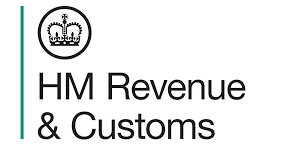HMRC SDLT: Guidance on Completing SDLT Forms and Providing Land Plans for Transactions
Principles and Concepts of SDLT Forms Guidance
This section provides detailed guidance for completing SDLT forms, specifically SDLT1, SDLT3, and SDLT4. It focuses on question 33 of SDLT1, which pertains to the plan of land. The guidance is intended for HMRC internal use and aims to ensure accurate processing of these forms.
- Detailed instructions for SDLT1, SDLT3, and SDLT4 forms.
- Focus on question 33 of SDLT1 regarding land plans.
- Guidance is for HMRC internal processing.
- Ensures accuracy in form submissions.

Read the original guidance here:
HMRC SDLT: Guidance on Completing SDLT Forms and Providing Land Plans for Transactions
This article focuses on question 33 found on form SDLT1 (1.33 online), question 8 on form SDLT3, and question 14 on form SDLT4. It provides guidance on how to fill in these forms correctly when it comes to land transactions that do not have proper postal addresses.
Key Instructions for Completing Question 33
When you reach question 33, you need to indicate if the answer is ‘Yes’ or ‘No.’ Choose the response that accurately reflects your situation. Here’s what you need to know:
- For any property transaction involving land that lacks a postal address, a plan must be provided.
- The plan must show the scale. If the plan does not have a scale, it should be labelled as ‘Not to Scale.’
Requirements for the Plan
Alongside indicating “Yes” or “No”, it is essential to include a plan of the land. Here’s what the plan must contain:
- On the plan itself, or on its reverse, you must show:
- The reference number of your return.
- The address or a detailed description of the land.
- The local authority code for the area where the property is located.
How to Submit the Plan
You have two options for submitting the plan with your SDLT return:
- Attach a Copy: You can print your plan and send it with your SDLT return paper form.
- Email Submission: If your transaction is in England, you can submit the plan electronically. Here’s how:
- Send the plan via email to the Valuation Office at [email protected].
- Make sure to include the following details in your email:
- Your Unique Taxpayer Reference Number (UTRN).
- The address or detailed description of the land.
- Full contact details so they can reach you if there are any questions.
Importance of Providing a Plan
Providing a plan is vital for several reasons:
- Clarification: A plan helps clarify the exact boundaries and location of the land you are transacting.
- Verification: It assists the authorities in verifying the details you have provided.
- Legal Requirement: Submitting a plan is legally required when there is no postal address, ensuring compliance with stamp duty regulations.
Examples of When a Plan is Needed
To further clarify, here are examples of situations where you would need to provide a plan:
- Empty Land: If you are purchasing a plot of land that does not have a postal address, a plan is necessary.
- Commercial Properties: If you are dealing with a commercial property that is not individually numbered or has no postal address, you must provide a detailed plan.
- Land That is Under Development: If you are buying land that is currently being developed and lacks an address, you are required to include a plan.
Consequences of Not Submitting a Plan
Failing to provide a necessary plan can lead to complications such as:
- Delays in processing your Stamp Duty Land Tax (SDLT) return.
- Potential fines or penalties due to non-compliance with statutory requirements.
- Issues in confirming the legality of your transaction, which could impact ownership rights.
Additional Tips
Here are some practical tips to ensure that your plan meets all the required standards:
- Check Map Scale: Always clearly indicate the scale of the plan. If there is no scale, mark it clearly as ‘Not to Scale.’
- Contact Your Local Authority: It may be helpful to consult with your local authority for the local authority code, as this information is essential for your submission.
- Keep Copies: Always keep copies of your submitted plans and returns for your own records.
Getting Assistance
If you are unsure about how to provide a plan or have specific questions regarding your circumstances, consider seeking professional advice. Here are options for obtaining help:
- Consult a Solicitor: A solicitor who specializes in property transactions can offer valuable guidance throughout the process.
- Use HMRC Resources: HMRC provides various resources and contact points for inquiries related to SDLT. You can reach out to them for assistance with Stamp Duty issues.
- Local Government Advice: Local councils may also provide advice related to land transactions and regulations regarding property plans.
Final Notes
Understanding how to complete question 33 and provide a plan correctly is crucial when submitting SDLT forms, especially for transactions involving land without postal addresses. Follow these guidelines to ensure compliance and facilitate a smooth process.
For more information or detailed guidance on SDLT processing, you can refer to additional resources like SDLTM62360 – Processing: Further guidance for completing forms SDLT1, SDLT3, and SDLT4.







